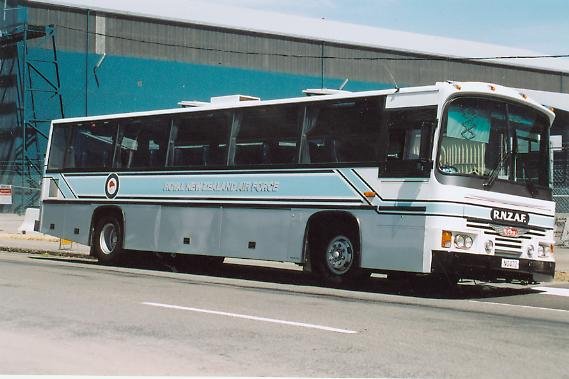I originally posted this in the
Aircraft Prices thread 2 years ago and have reposted it here as an explanation of the FMS costs.
This is an explanation of US FMS costing differences. Whilst this is placed here, it equally applies to naval and ground platforms.
Why Foreign Military Sales Are Always Worth Less Than The Published Number
Loren Thompson , CONTRIBUTOR
SEP 19, 2017 @ 01:30 PM
Arms sales to overseas partners are a major tool of U.S. foreign policy. They are also a growing source of revenues for U.S. defense contractors, who have faced flat domestic demand in recent years due to congressionally mandated caps on Pentagon spending. When arms sales are done right, they can bolster regional security, strengthen alliances, lighten the warfighting burden on U.S. forces, improve the trade balance and create jobs in the U.S.
To make sure they are done right, all foreign military sales are subject to strict standards set forth by the Arms Control Export Act of 1976. The Department of State has final say in approving proposed transactions, with the Department of Defense assuming a leading role in executing deliveries. Other cabinet departments and agencies may also participate, and Congress always is given an opportunity to block big arms deals.
However, there is one facet of this highly articulated process that often gets quite confused, and that is the value of the transactions. News reports about the value of pending arms sales are often greatly exaggerated, particularly compared with the amount of money that the companies manufacturing the arms are likely to ultimately receive. Here, for example, is a passage from a news story that appeared on the eve of President Trump's May visit to Saudi Arabia:
The official, who spoke to Reuters on condition of anonymity, said the arms package could end up surpassing more than $300bn over a decade to help Saudi Arabia boost its defensive capabilities while still maintaining US ally Israel's qualitative military edge over its neighbors.
$300 billion would be nearly half of Saudi Arabia's annual gross national product, a level of weapons outlays unlikely in all but the most extreme circumstances. After the president completed his trip to the kingdom, many news accounts settled on the more "modest" estimate that Riyadh's new purchases of Lockheed Martin helicopters, Boeing maritime patrol planes, and other U.S. military items would be worth around $110 billion.
But where do such figures come from? Usually they come from congressional notification documents alerting Capitol Hill to proposed transactions. Congressional notification always occurs after a prospective purchasing country has formalized its request for specific military items, but before the U.S. government has responded with a proposed package of goods and services -- called a Letter of Offer and Acceptance.
And that's where what we might call the "arms sale inflation process" begins. Because negotiations with overseas buyers haven't been finalized when Capitol Hill is informed about an impending deal, the executive branch typically includes everything in its estimates that could possibly be covered by a deal. Not just weapons quantities but options for follow-on purchases, spare parts, initial training and maintenance, etc. It may also include a "just in case" financial buffer that further inflates the likely value.
If Congress doesn't like what it sees, a joint resolution can be passed to block the deal. But to avoid having to go back to the Hill later if subsequent discussions with the customer take an unexpected turn, congressional notifications tend to include everything but the kitchen sink, and the resulting price-tag is quite imposing. It is not uncommon for the publicly reported value of a transaction drawn from congressional notification documents to be a quarter or a third bigger than the price that is ultimately agreed to.
Now, that might not be so bad if the real price were eventually disclosed, but it generally isn't. The Department of Defense claims an exception to the Freedom of Information Act for foreign military sales data that might cause competitive harm to weapons makers, or might impair the government's ability to secure necessary information in the future, or simply might undermine some undefined interest of the government. So usually the inflated estimates in congressional notification documents are the only cost data to reach the public.
So imagine, if you will, that the negotiated price for an arms package is $3 billion rather than the $4 billion contained in congressional notification documents. That's what the U.S. companies building the weapons being sold will actually get, right? Wrong. Because much of the price negotiated for a sale actually consists of so-called "government furnished equipment" (like aircraft engines and munitions) or services the U.S. government itself provides, rather than money that counts as revenue for weapons makers.
Thus, even before the weapons makers start passing revenues through to their own suppliers, the value of a transaction may have shrunk to less than half the figure that readers are seeing in published reports. Granted, the original equipment manufacturer may reap additional revenues after weapons are delivered to the foreign customer for maintenance and other in-service support, but those arrangements vary markedly from transaction to transaction, and they often are not finalized at the time an arms sale is agreed to.
The problem with inflating publicly available pricing data the way the current arms sale process does is that it can inflame opposition in purchasing countries because the size of transactions is so exaggerated. In other words, deals become harder to do because the locals get "sticker shock." The truth of the matter is that foreign buyers like the Saudis are canny negotiators striving to get the best deals they can, and deals don't happen unless both sides are comfortable with the outcome.
Several companies engaged is selling weapons through the foreign military sales program contribute to my think tank. Some are consulting clients.

